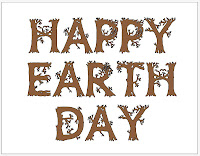
 The ancient African art mainly consisted of masks and figures that were used for various religious ceremonies. Apart from these, the other artforms included sculptures, paintings and decorative objects. The decorative objects mostly included textiles and everyday tools, which formed an integral part of all African cultures. African art has always been appreciated for its intrinsic aesthetic value. It comprises of an enormous collection of rock paintings and sculptures that are considered to be their greatest achievements. Most of the artwork in Africa has tremendous visual appeal and inspires a number of children's art projects in schools. Art teachers take various African art pieces as reference subjects.
The ancient African art mainly consisted of masks and figures that were used for various religious ceremonies. Apart from these, the other artforms included sculptures, paintings and decorative objects. The decorative objects mostly included textiles and everyday tools, which formed an integral part of all African cultures. African art has always been appreciated for its intrinsic aesthetic value. It comprises of an enormous collection of rock paintings and sculptures that are considered to be their greatest achievements. Most of the artwork in Africa has tremendous visual appeal and inspires a number of children's art projects in schools. Art teachers take various African art pieces as reference subjects.The easiest African art project for children is to create a paper flag of one of the countries in Africa. Apart from wood, African sculptures were made from a variety of other materials, such as mud, beads, ivory, terracotta, metal and stone. Children can create replicas from ivory soap bars. Clay can also be used to create small figures, which can further be painted with gold acrylic, to decorate them. The Zulu tribe in Zimbabwe has been writing letters, using beads since a very long time. The cryptic messages and proverbs in these letters depend on the design, color and placement of beads. These letters are also good topics for art projects for children. The red, black and white shields of Kenya can be easily made of cardboard, paint, bells, shells and paint.


 9:16 AM
9:16 AM
 keprok
keprok
























































